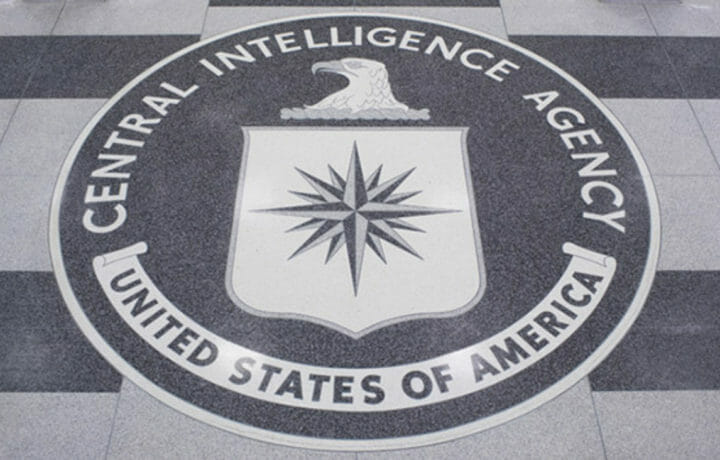The CIA’s assistant director for counterintelligence, Sheetal T. Patel reportedly sent a “Worldwide Stations and Bases” (WWSB) cable to all CIA personnel abroad on the very ticklish topic of the CIA’s covert assets being captured or killed, according to the New York Times, citing people familiar with the matter.
The WWSB cable allegedly advised that the CIA’s Counterintelligence Center had “looked at dozens of cases in the last several years” who had been compromised and in some cases, arrested and killed. The remarkable aspect of the missive from Patel was the level of specificity within highlighting the exact number of compromised cases.
The cable touched on the topic which raises its head on a generational bias within the CIA, which the NYT described as “the struggle … to recruit spies around the world in difficult operating environments.” The cable, reportedly goes on to describe how “poor tradecraft; being too trusting of source; underestimating foreign intelligence agencies and moving too quickly to recruit … while not paying attention to potential counterintelligence risks” or the return to the culture of “mission over security.” The NYT continues how the cable was directed primarily at “front line agency officers, the people involved most directly in recruiting and vetting of sources” as a means to prod them into doing their job better.
Patel is not the first head of counterintelligence within the CIA to call out the rank and file operations officers, highlighting the need to up their game in the tradecraft department, to include doing the “scut-work” of asset validation and counterintelligence review with a jaundiced eye. Indeed, a great deal of historical work, now publicly available, details the urgency in adapting tradecraft to the environment and the importance of vetting assets in a dynamic, continuous fashion.
CIA Tradecraft – recruitment and validation
In 2010, Paul Redmond, former Associate Deputy Director of Operations for Counterintelligence at the CIA wrote in the “Oxford Handbook of National Security” on the use of counterintelligence as operational tradecraft. His essay, mirrored the advice many an officer heard first hand during his time inside the CIA. He minces no words as he admonishes the CIA to hold the core collector, the case officer, to the highest of possible standards of operational security and tradecraft.
” Unless the discipline of good operational security is forcefully imposed on the average American case officer the default will be sloppy or non -existent tradecraft. Putative sources will be met in the dining room of a posh hotel literally next to the U.S. embassy. Operational failures will be explained away by the case officer’s statement that he was using “semi-clandestine” tradecraft, and officers operating in alias abroad will call home on cell phones. In the early twenty first century the use of sloppy tradecraft presents the U.S. intelligence community with a daunting and critical challenge. An entire generation of new American case officers is getting its initial, formative, “(on- the-street” experience in the war zone of Iraq, meeting sources with armed and sometimes armored military or paramilitary escorts or within fortress compounds. This sort of “trade craft” bears’ no resemblance to the clandestine operational activities required to recruit and manage human sources elsewhere” ~Paul J. Redmond
In 2004, then DCI Porter Goss conceived the Galileo Awards, where submissions were requested to modernize, effect change, and bring the CIA to a new level of achievement and success. One entry, a winning entry at that, “Dynamic Adaption: A 21st Century Intelligence Paradigm” urged a new paradigm evolve with respect to counterintelligence. The author (redacted) promoted bringing the entire IC’s counterintelligence authorities under the National Counterintelligence Executive and to also address the juncture of where CI meets “FI” (foreign intelligence collected). The “new CI must take responsibility for significantly enhanced protection of intelligence source and methods.”
In 2005, President Bush, took on board the recommendations from the WMD commission and declared, “The CIA’s asset validation procedures will serve as the model for the HUMINT collection community. The CIA and Defense Intelligence Agency’s Defense HUMINT Service (DIA/DHS) will take the lead in developing an implementation strategy relevant to clandestine and overt sources, respectively. ”
And in 2002, the seventh chief of the counterintelligence staff, James Olson, published an article in the Studies of Intelligence in which he articulated “A never-ending necessity: The 10 commandments of Counterintelligence”
- Be offensive
- Honor your professionals
- Own the street
- Know your history
- Do not ignore analysis
- Do not be parochial
- Trian your people
- Do not be shoved aside
- Do not stay too long
- Never give up
If there has been a backward slide, Patel is on-point to bring the entire directorate into line with her missive. There exists no margin for error when it comes to exercising good and secure operational tradecraft. For those wanting a primer on asset validation, they need only look at the CI Centre (a commercial entity) who offers an out-of-the box 3-5 day course “512: Counterintelligence Asset Validation Course”



